A Botanical Garden for Native Plants Nature Lovers
By Cynthia Wood
In the foothills of the Blue Ridge Mountains in Nelson County, Virginia, the Quarry Gardens at Schuyler offer a unique opportunity for nature lovers to learn about native plants and their ecosystems. Because Nelson County includes parts of both the Piedmont and the Blue Ridge, the site supports an unusually rich diversity of species.
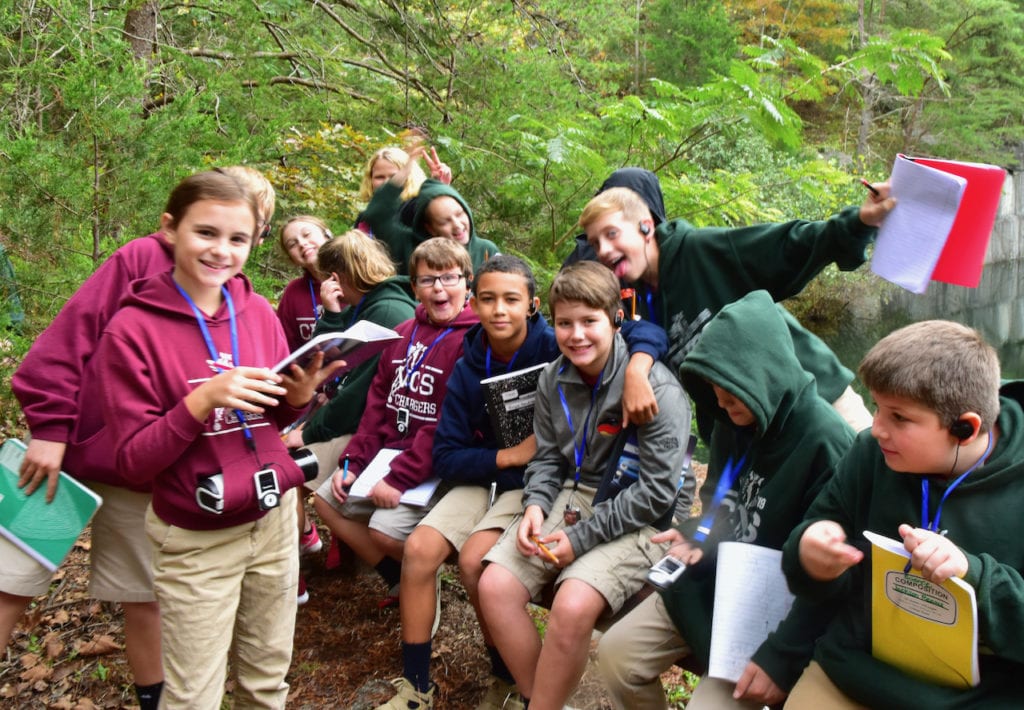
Local schools use the Quarry Gardens as a lab for practicing scientific observation.
Opened to the public in 2017, the Quarry Gardens occupy 40 acres within a 440-acre natural preserve owned by Bernice and Armand Thieblot. In 2013, the couple decided to restore the land around six abandoned soapstone quarries on the property as a retirement project. To do so, they removed junk left from when the site was used as a dump and, with help from the Center for Urban Habitats in Charlottesville, studied the local geology, cataloged the existing plant and animal species, and built trails.
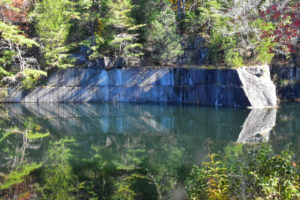
The north quarry pool is one of two whose serene waters reflect the surrounding woodland.
Studies of the local geology revealed that most of the soil is high in magnesium and alkaline because of the underlying soapstone deposits. The less frequent but more typical Piedmont soil offers hospitality to a wide variety of plants. However, acidophiles—such as hollies and mountain laurels—are less frequent and robust.
Imagine 40 acres of woodlands, with two miles of gentle trails meandering through woodlands, prairies, wetlands, a fern gully, and a waterside rockfall sprouting plants one would expect to see in a desert.
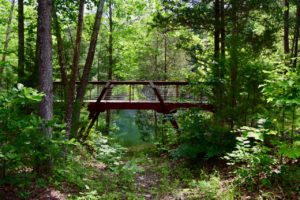
Two bridges allow the main trail to hug the quarry edges—and visitors to see the fish swimming below.
Visit in spring, and the woodland areas are awash in shades of blue, purple, and white. Some of these early wildflowers are ephemerals or plants that emerge, sprout leaves, bloom, produce seeds, and go dormant, all within about six weeks. A short walk along a hilly trail reveals round-lobed hepatica (Anemone americana), a small plant with very fuzzy stems and blooms that vary in color from nearly white to bluish-purple.
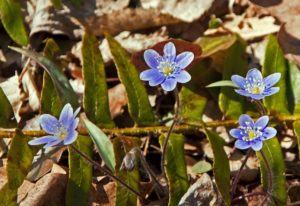
Hepatica often peeps through other understory plants, such as this Christmas fern.
There are also small colonies of dwarf larkspur (Delphinium tricorne) and dwarf crested irises (Iris cristata). You may even detect the faint scent of skunk cabbage (Symplocarpus foetidus) wafting on the breeze and luring you to a boggy area where they grow.
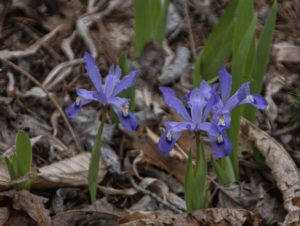
Dwarf crested iris, growing just a few inches tall, blooms in large colonies along the trail in April.
Visit slightly later in spring, and there will be a different array of wildflowers. There are curlyheads not far from the parking area (Clematis ochroleuca), a bush clematis with seed heads resembling untidy heads of very curly hair. Near the visitors’ center are three species of pussytoes (Antennaria ssp.), which have soft, fuzzy inflorescences that resemble the tiny toes of kittens. There are also eastern shooting stars (Primula meadia), an uncommon plant, as well as pale pink moss phlox (Phlox subulata.)
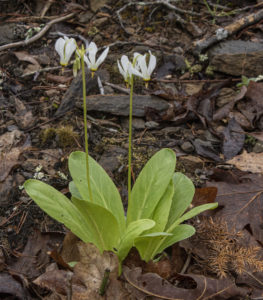
Eastern shooting stars have either white or dark pink blooms; both variants are uncommon in Virginia.
The wildflower parade continues into summer when visitors will find tall, candle-like spikes of black cohosh (Actaea racemosa) and purple-flowering raspberry (Rubus odoratus) as well as delicate .goat’s-beard (Aruncus dioicus), by the Giant’s Stairs. Summer also brings five species of milkweed, both pasture and swamp roses, and common yarrow. Growing in shallow indentations in rocks by the viewing platform, visitors will find quill fameflower (Phemeranthus teretifolius), an unusual succulent with vivid magenta flowers, each of which lives for just one afternoon.
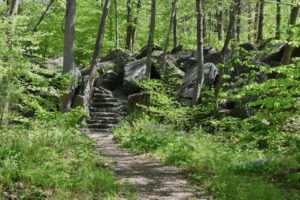
The fantastical Giant’s Stairs are situated in a Piedmont basic oak-hickory forest and lead down to a rich area where yellow lady’s slippers are found.
A fall visit to the Quarry Gardens means masses of deep yellow goldenrods (Solidago spp.), as well as bold purple New England asters and pink rose-pinks (Sabatia angularis). It’s also a good time to search for mushrooms.
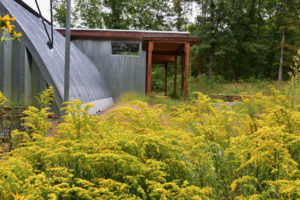
Fourteen species of goldenrod can be found lighting up sunny areas.
In 2016, Governor Terry McAuliffe designated the Conservation Easement that surrounds the Quarry Gardens a Virginia treasure. The Quarry Gardens offer many opportunities for education and pleasure. It’s possible to simply wander the trails and enjoy nature or have a picnic, but there are many opportunities for learning, too – field trips for students and nature-focused organizations; information on native plants and how they might be grown in home gardens; history of the quarrying industry that made Schuyler the soapstone capital of the world for more than a century; and opportunities to hone plant identification and photography skills.
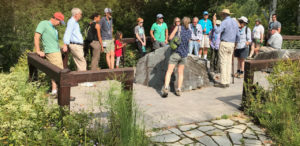
With a biota of more than 950 plants and animals, The Quarry Gardens have the most extensive documented number of native plants of any botanical garden in Virginia.
Visits are by appointment, and scheduled tours are posted at The Quarry Gardens – A landscape carved by industry and renewed by the power of nature to regenerate.
About the Author
Cynthia Wood, Ph.D., is a native of Prince Edward County, Virginia. She is a serious amateur gardener and nature photographer who enjoys getting dirt under her fingernails and watching things grow. She is a member of the Heart of Virginia Master Gardeners. She regularly conducts training in basic botany for Master Naturalists. She is a regular contributor to South Piedmont Region Report, Slow Gardening in the Piedmont, Back Page Column, and periodic special features. In addition, she writes two monthly columns for the Farmville Herald – one on native plants and the other on general gardening-related topics and the gardening column for Farmville Magazine. She has a Ph.D. from the University of Virginia and completed her post-doctoral work at the John Hopkins University. She is a retired (well, mostly) management consultant specializing in change management and international mergers and acquisitions. She loves to travel and observe what gardeners are doing in other countries. She also loves to hike and discover new plants.
***
Each author appearing herein retains original copyright. Right to reproduce or disseminate all material herein, including to Columbia University Library’s CAUSEWAY Project, is otherwise reserved by ELA. Please contact ELA for permission to reprint.
Mention of products is not intended to constitute endorsement. Opinions expressed in this newsletter article do not necessarily represent those of ELA’s directors, staff, or members.

